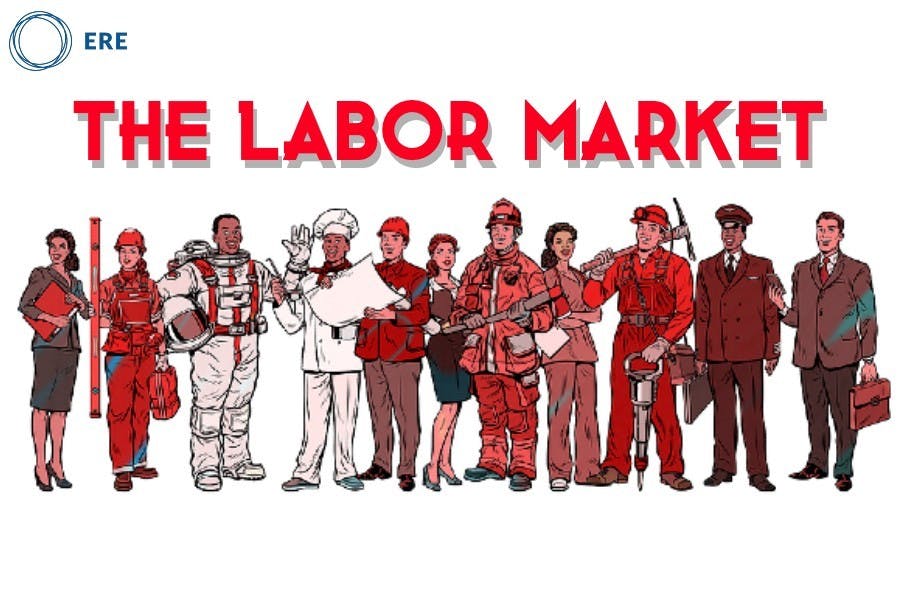After two dismal months of job market reports, October’s numbers were a welcome sign the labor market still has plenty of gifts to deliver ahead of the holiday season. As the Delta variant took hold near the end of the summer and peaked in mid-September, the pace of job gains slowed considerably. Simple logistics of candidates and hiring managers connecting for interviews affected how quickly we could recoup the millions of jobs that remained lost from the early impacts of the pandemic.
Yet as virus counts dropped starting in late September, the U.S. job market roared back in October, with 531,000 jobs created. Plus, the latest data delivered even more good news: August and September growth was revised upward to include 235,000 more jobs than previously reported.
Financial Activities Crosses Goal Line First
The financial-activities industry reached an important milestone in October. The industry gained 21,000 jobs last month, putting it just above its pre-pandemic employment level. It’s the first industry to reach that status — though not the only one with good news ahead.
Businesses in financial activities employ just under 8.9 million people in the U.S., and the strength of the housing and stock markets are two factors that have helped keep and create jobs at banks, investment firms, and real-estate companies.
Looking to 2022, the next industries expected to regain similar footholds are construction, buoyed by new and pent-up demand for housing, and professional and business services. These latter benefited from fewer jobs lost to the pandemic and a more seamless switch to remote work for white-collar and office workers.
Employee Churn Continues
The number of voluntary quits reached another record. The latest report showed 4.4 million people quit their jobs in September. Before the pandemic, the highest seasonally adjusted total was 3.6 million quits in a single month. The gap between those two numbers, roughly 800,000, is equivalent to the size of Salt Lake City’s entire employment base.
On a relative basis, the number represented 3% of the employment base. If quits remain at that rate, the annualized voluntary turnover rate would be 36% for 2021. While that pace of quits is at a record level, the trend of voluntary quits has been steadily increasing for more than a decade.
We might not keep hitting new monthly records with the number of people quitting their jobs, but there’s no evidence it’ll decline significantly anytime soon.
On one hand, this represents talent acquisition at its finest — connecting people with opportunities that make the most sense for them, be it for higher pay, more responsibility, different company culture, or just a change of scenery.
On the other hand, it leaves business leaders scrambling to figure out how to keep production and revenue goals on track when their employee base is changing at a pace never seen before. With the unemployment rate down to 4.6% and roughly 3 million fewer people in the labor force compared to a couple years ago, business leaders need to accept this new reality and adjust accordingly.
Why Unemployed People Don’t Have Jobs
There are approximately 7.4 million people who are unemployed right now. Despite the 10.4 million open jobs, they haven’t accepted a new role. The most common reasons for their unemployment status:
- 2.2 million recently reentered the labor market to find a job again
- 2.1 million lost their job involuntarily
- 1.1 million were part of a layoff or furlough and expect to regain their position within six months
- 0.8 million voluntarily left their previous job
The remaining unemployment data include those who completed temporary jobs or are new entrants to the job market, such as recent graduates.
2022 Outlook Strong — but Minor Possible Setbacks
The numbers for October were terrific, but maintaining that type of growth through another wave of rising virus counts could be challenging. Holiday travel is projected to be closer to pre-pandemic levels, and that will be great for the economy. The downside is it’ll likely create some disruptions with people getting sick, even if it’s just the common cold.
If the numbers slow a bit in the next couple months, don’t lose sight of the overall trend: The outlook for hiring through 2022 remains strong. The estimation for the number of new jobs created next year is roughly 3.6 million, which is still a larger-than-normal total — this also means the labor market will keep getting tighter. Over the past decade, 2.5 million jobs would be a great year of job growth.
The current unemployment rate is at 4.6%, which itself is low, considering the average for the past 60 years is 6%. Meanwhile, The Wall Street Journal in October surveyed 65 economists and the group estimated the unemployment rate would decline to 3.9% by the end of 2022. In other words: If you think this labor market is tight, just wait until you see 2022.
